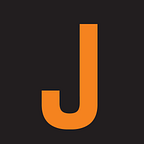Using product thinking to help hyperlocal newsrooms develop an audience-centric approach
Tim Lam is passing on the lessons from the Product Immersion for Small Newsrooms program to news startups across North America
When Tim Lam joined the Product Immersion for Small Newsrooms program at the Newmark Graduate School of Journalism in January, he wasn’t sure that “product” was part of his role. At the time, he was the editor-in-chief of Cold Tea Collective, a media publication that serves the Asian diaspora in North America.
“To be honest, before the program, I didn’t think of myself as a product person, per se,” Lam said recently. His background focused more on the business side of media, digital marketing and audience development.
“But when I read the application, I was like, hey, a lot of this fits with what I’m doing,” Lam said. “I was more curious to hear about product, and especially within a newsroom context. I’d never heard about it through a newsroom’s context, only through a tech context. I think that’s what sparked my curiosity.”
Part of the appeal of the program for Lam was that it catered to smaller newsrooms. Having never worked in legacy media, he found it helpful to be surrounded by others who were also dealing with the challenges of working in newer, leaner organizations.
“To be in a cohort with a bunch of people who know what I’m going through, can share similar advice, have similar amounts of resources — i.e. very little resources — and can help each other work through that, I think that’s what really appealed to me,” Lam said.
The Product Immersion for Small Newsrooms program, a joint endeavor from the Newmark School, News Catalyst and the Google News Initiative, teaches journalists digital transformation through product thinking.
At the time of the program, Lam says, Cold Tea was “kind of floundering a little bit with our news products. What’s funny is, before the program, I wouldn’t even have a language to describe it as a news product. We were just floundering with how best to serve our audience. Now I realize, it’s because we just couldn’t figure out what was the best news product to offer our audience.”
At the beginning of the year, Lam stepped away from his full-time role at Cold Tea, where he’s still an editorial advisor. Now he works as an audience strategy manager at Indiegraf, a start-up that works to “empower community-based news outlets.”
The work involves helping small newsrooms, mostly with only one to five journalists, start and grow publications, sometimes from scratch. Indiegraf provides tech, marketing and audience services to allow these newsrooms to thrive.
Lam said the lessons he learned in the Product Immersion program have both helped him lead at Indiegraf and guide their clients’ growth. Frameworks like OKRs — objective and key results — and MOCHA — manager, owner, consultant, helper, approver — help to stay focused and keep track of projects.
While the young, tech-focused team at Indiegraf took to these ideas quickly, he says it has sometimes been a harder sell with the hyperlocal newsrooms that they work with. The product-thinking approach is often new to journalists, who are hesitant to invest the time in processes like surveying audience members. But he says, when he can show that these interviews uncover problems “lurking in their blind spots,” many come around to the idea.
“In smaller newsrooms, the thing is just capacity,” Lam said. “So you have to really sell them on the fact that this is worth their time. Once you can kind of get past that first hurdle and show them that there’s value in doing this, especially if they’re uncovering new information about their audience that they’ve never had before, then that usually helps justify their time to do product-related things.”
Indiegraf launched last summer, and Lam says that the demand for their support has shown there’s a real need for professional guidance for these startup newsrooms. He expects the company’s clients to more than double this year.
For Lam, he hopes to move into a more product-related role. He says the Product Immersion program gave him “more confidence in my product leadership skills. Having that training really helped encourage me to pursue a more product-related career and believe that I was capable of doing so.”
Elise Czajkowski is a writer/editor who regularly writes about the Newmark Graduate School of Journalism’s executive and professional education programs. Based in New York, she was previously a Tow Knight Fellow in Entrepreneurial Journalism at the Newmark J-School. She launched a non-profit called Sidewalk News, which uses outdoor advertising to distribute local news.
